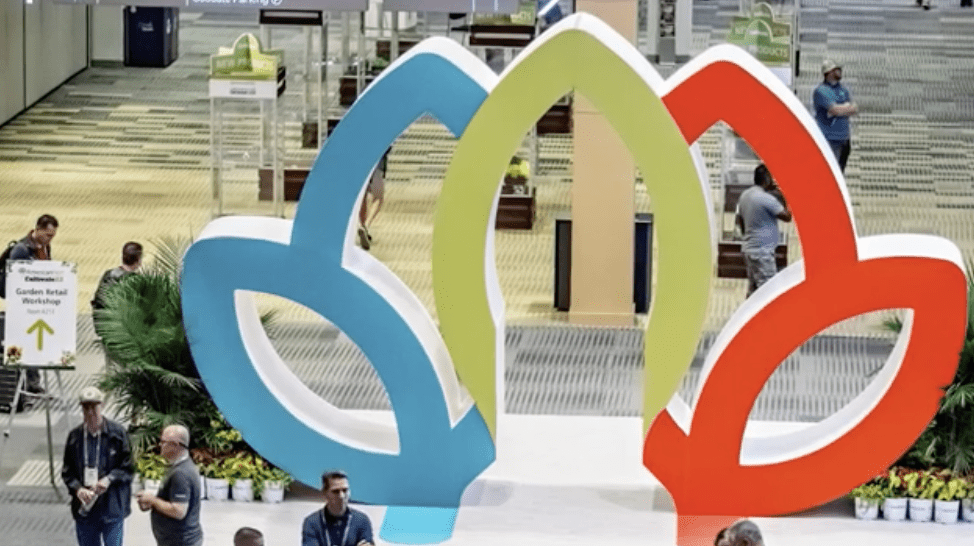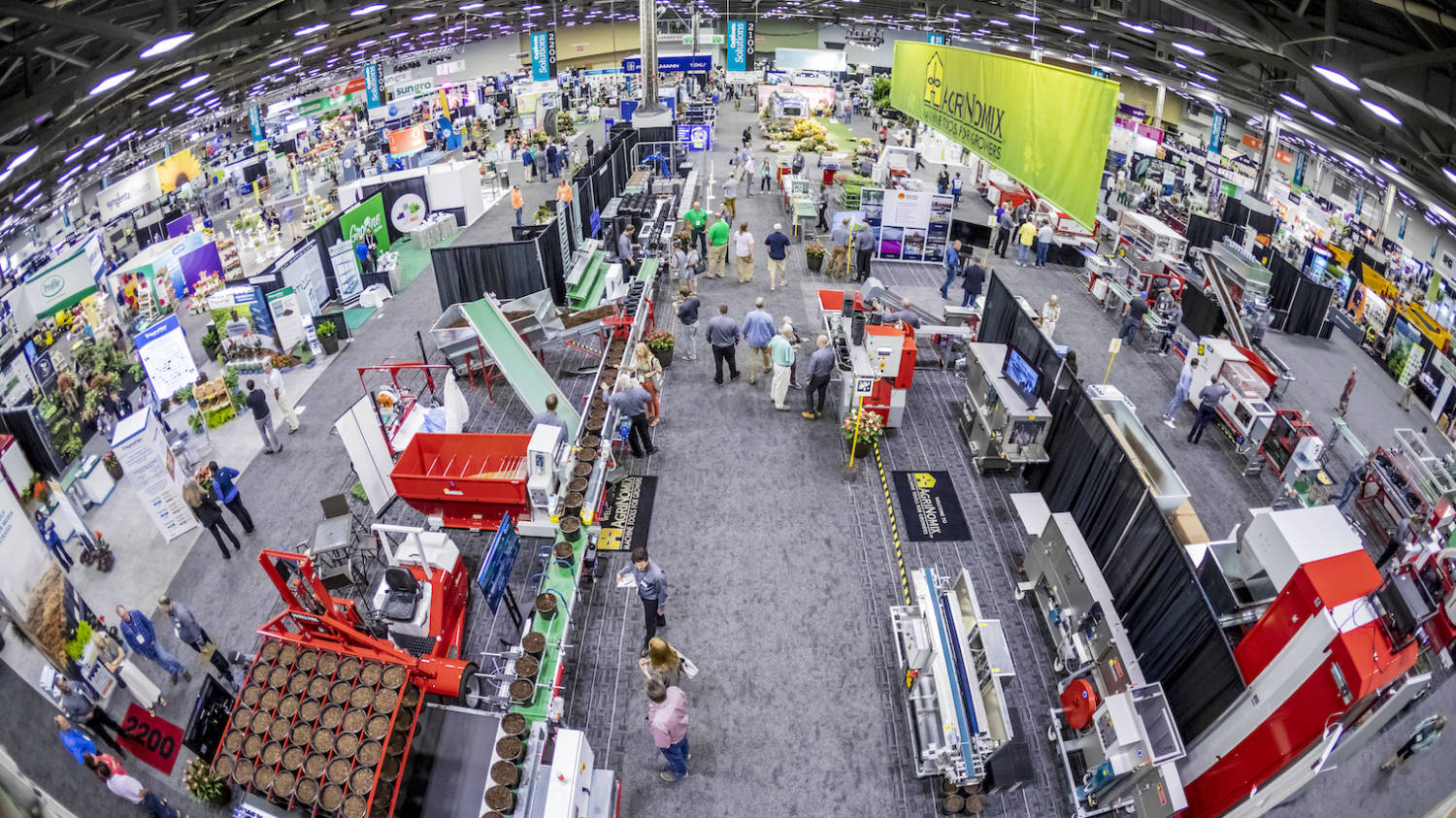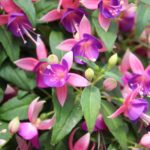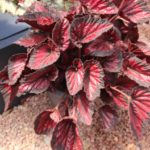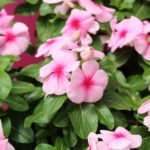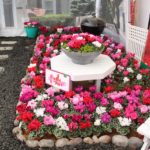Arabis caucasica ‘Little Treasure Deep Rose’
Arabis caucasica, commonly referred to as rock cress, is a delicate cool-season perennial often produced by growers for early spring sales. As the common name implies, rock cress is widely planted in rock gardens, but also performs well as a groundcover and in border plantings. With its early bloom, arabis is commonly marketed in the early spring alongside annuals such as pansies and early blooming perennials like aquilegia, bellis and myosotis.
Arabis 'Little Treasure Deep Rose' produces an abundance of vibrant rose-pink blossoms in mid-spring. When blooming, the sweetly fragrant flowers nearly cover the entire plant. It forms compact, low-growing cushions of evergreen foliage reaching 4-6 inches in height and spreads 10-12 inches wide. With its impressive flower power and reliable garden performance, 'Little Treasure Deep Rose' was named a Fleuroselect Quality Mark winner in 2006.
'Little Treasure Deep Rose' is suitable for production in USDA Hardiness Zones 3 to 8 and AHS Heat Zones 8 to 1. Like many cool-season plants, arabis does not tolerate the extreme summer heat of much of the United States. It performs best when grown in sunny locations in the North and under partial shade when being produced in the South. To maintain plant quality, retain a compact form and prevent "melting out," it is recommended to trim them back after they are finished blooming in the spring. Once established, arabis are fairly drought tolerant.
Propagation
'Little Treasure Deep Rose' is easily propagated by seed and is available from Syngenta Flowers. Propagators commonly start them in small 288- or 220-cell sized plug trays. Sow three to five seeds per cell, and do not cover the seed with germination mix or vermiculite. Because light is required for germination, covering the seeds may adversely affect the germination process. The seed flats should be moistened and moved to a warm environment, where the temperatures can be maintained at 63-67¡ F for germination. Starting arabis in a germination chamber will increase both the germination rate and percent germination, while decreasing the time necessary for all of the seeds to sprout. Maintain high humidity (95 percent) until the cotyledons have emerged. The seeds should be germinated in seven to 10 days.
Following germination, gradually reduce the humidity. Grow them with temperatures of 60-65¡ F. Reduce the moisture levels somewhat, allowing the growing medium to dry out slightly before watering to help promote rooting. Do not keep them overly wet during plug production or plant losses are likely. Fertilizers with a balanced, water-soluble source are usually applied once the true leaves are present, applying 75- to 100-ppm nitrogen every third irrigation or 50 ppm with every irrigation. At these temperatures, 'Little Treasure Deep Rose' will finish the plug stage in five to seven weeks.
Production
'Little Treasure Deep Rose' is most commonly produced in small container sizes (5-inch or smaller) with a single plug planted in the center of the pot. When transplanting, the growing medium of the pot should be even with the top of the plug. Arabis performs best when grown in a moist, well-drained medium with a slightly acidic pH of 5.5-6.5. When irrigation is necessary, water them thoroughly and allow the soil to dry slightly between irrigations. They are moderate feeders. Providing high or luxury fertility levels will cause them to appear lush and may delay flowering. Growers commonly deliver nutrients using either a constant liquid fertilization program, feeding at rates of 75- to 125-ppm nitrates, or a controlled-release fertilizer incorporated at a rate equivalent to 1 pound of elemental nitrogen per yard of growing medium.
With their compact growth habit, it is usually not necessary to control the plant height. However, during the winter months, periods of low light levels, when grown at high plant densities or with luxury nutrient levels, excessive plant growth might occur requiring some type of height management strategy. The growth of arabis can often be controlled by providing adequate spacing between the plants. It may be necessary, although not common, to use chemical plant growth regulators to control the growth of rock cress. In the northern parts of the country, I recommend applying B-Nine (daminozide) at 2,500 ppm. Applying one to two spray applications at seven-day intervals should provide adequate height control.
Insects and Diseases
There are only a few problems with insects or diseases that growers are likely to experience. Aphids are the most troublesome insect pests of arabis. It may be beneficial for growers to consider preventative drench applications of products containing acetamiprid, dinotefuran, imidacloprid or thiamethoxam to provide up to 12 weeks of aphid control.
The most common disease observed by growers is Botrytis. Botrytis is likely to occur late in the crop cycle once the canopy closes in, as they begin to bloom, or just after flowering. In most cases, Botrytis can be prevented or reduced by providing adequate spacing, good air circulation and a relative humidity below 70 percent. Selling plants when the flower buds just begin to open and, if necessary, implementing a preventative fungicide spray program using products containing azoxystrobin, chlorothalonil or fenhexamid, can also help reduce the occurrence of Botrytis. Root rot (Pythium and Rhizoctonia) is likely when arabis is produced under overly wet growing conditions.
Insects and diseases can be detected with routine crop monitoring; control strategies may not be necessary unless scouting activities indicate actions should be taken.
Forcing
Arabis 'Little Treasure Deep Rose' is easy to force into bloom, and is most commonly produced for early spring sales. They have an obligate cold requirement for flowering. I recommend vernalizing them in the final container or as large plugs (72-cell or larger) for a minimum of nine weeks at 35-44¡ F. Following the cold treatment, rock cress will flower under any photoperiod and can be forced into bloom under natural day lengths. The length of the photoperiod has no effect on the time to flower or the number of blooms produced.
There are two common approaches to producing flowering containers of arabis. The first method: Plant unvernalized plugs into the final container during early to mid-fall, allow them to bulk up slightly, vernalize them and force them to bloom in the early spring using low production temperatures of 50-60¡ F for four to six weeks. The second strategy involves transplanting vernalized plugs into the final containers during the late winter and forcing them at 50-60¡ F for five to seven weeks. Arabis are cool-season plants and prefer to be grown at cool temperatures. Providing low temperatures will produce high-quality plants but requires additional production time for the plants to reach flowering.
Availability
Seed of Arabis caucasica 'Little Treasure Deep Rose' is available to growers through Syngenta Flowers (www.sg-flowers-us.com). Plugs can be acquired from many reputable perennial plug producers or plant brokers.








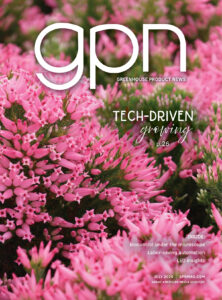
 Video Library
Video Library 